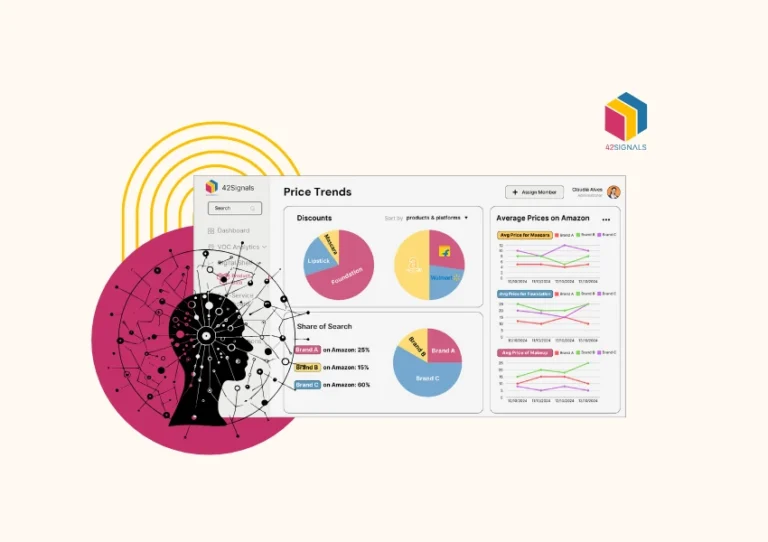In today’s rapidly evolving retail landscape, pricing analytics has emerged as a critical tool for success. With increasing competition and changing consumer behaviors, retailers must leverage data-driven strategies to optimize pricing. This year, 2023, marks a significant shift in how retailers approach pricing, blending traditional methods with advanced analytics.
The Evolution of Pricing Analytics in Retail
Traditionally, retail pricing was more art than science, often based on intuition and competitor pricing. However, the digital revolution transformed this landscape. The introduction of big data analytics and sophisticated pricing software has enabled retailers to make more informed decisions. Companies like Walmart and Amazon have pioneered these changes, using real-time data to adjust prices dynamically, often influencing entire markets.

Source: https://competera.net/resources/articles/pricing-simulations
2023: A New Era for Retail Pricing Analytics
This year introduces cutting-edge tools and methodologies in retail pricing. Artificial Intelligence (AI) and Machine Learning (ML) are at the forefront, offering predictive insights and dynamic pricing models. For instance, AI algorithms can now forecast demand shifts with high accuracy, allowing for preemptive pricing adjustments.
Integrating Advanced Analytics into Your Pricing Strategy
The integration of advanced analytics into existing systems can be a challenge for retailers. It requires a structured approach, starting with a clear understanding of business objectives and the selection of appropriate tools. Retailers should focus on solutions that offer scalability and compatibility with existing data systems. For example, cloud-based analytics platforms can provide flexibility and real-time insights.
The Role of Data in Pricing Decision Making

In the realm of retail, the use of data in pricing decision making has become an indispensable strategy. It’s not just about having data; it’s about understanding and utilizing it effectively to make informed pricing decisions. This process involves various facets of data analysis and application.
1. Understanding Customer Behavior:
Data on customer behavior, preferences, and purchasing patterns are invaluable for retailers. By analyzing this data, retailers can identify what drives customers’ buying decisions and how sensitive they are to price changes. For example, a study by McKinsey showed that retailers using advanced analytics to understand customer needs saw a 2-3% increase in total sales.
2. Segmentation and Personalization:
Data allows for effective market segmentation, enabling retailers to tailor prices according to different customer groups. This personalized approach can significantly improve sales and customer satisfaction. A classic example is how airlines use customer data to segment pricing for flights, offering different prices based on time of booking, demand, and customer loyalty.
3. Competitive Analysis:
Retailers also use data to monitor competitors’ pricing strategies. This competitive intelligence helps them stay competitive by making informed decisions about their pricing. Tools like price tracking software enable real-time monitoring of competitors’ prices, promotions, and stock levels.
4. Optimizing Promotions and Discounts:
Through data analysis, retailers can determine the most effective promotional strategies and discount levels for their products. This optimization ensures maximum return on investment from marketing campaigns. For instance, a study found that personalized promotions could lead to a 5-8 times increase in ROI for marketing spend.
5. Inventory Management:
Data on sales patterns helps retailers manage their inventory more efficiently. By understanding which products are in demand, they can adjust pricing to balance supply and demand, reducing overstock and stockouts. Advanced systems can predict future demand patterns, further refining inventory management.
6. Real-time Pricing Adjustments:
In today’s digital age, retailers can adjust prices in real-time based on current market data. This dynamic pricing strategy, often seen in e-commerce, allows retailers to respond quickly to market changes, optimizing their sales and profits.
7. Long-term Strategic Planning:
Beyond immediate pricing decisions, data plays a crucial role in strategic planning. Retailers analyze long-term trends and patterns to make decisions about future product lines, store locations, and overall business strategy.
The Future of Retail Pricing: Predictions and Trends
The future of retail pricing analytics is likely to be increasingly automated and personalized. Predictive analytics will play a key role in understanding consumer behavior patterns. We may also see a rise in subscription-based pricing models and dynamic pricing becoming more prevalent across various retail sectors.
Conclusion: Staying Ahead in the Competitive Retail Landscape
As we navigate the complexities of the modern retail environment, the importance of staying ahead in the competitive landscape cannot be overstated. Innovations in retail pricing analytics are not just a trend; they are a necessity for survival and success. In this dynamic arena, retailers must be agile, data-driven, and customer-focused to maintain a competitive edge.
This is where solutions like those offered by 42Signals come into play. 42Signals, with its cutting-edge technology and expertise in data analytics, provides retailers with the tools and insights they need to make informed pricing decisions. By leveraging advanced analytics and machine learning, 42Signals helps retailers understand market dynamics, consumer behavior, and competitive strategies, enabling them to optimize their pricing and stay competitive.
The future of retail is data-driven, and the role of analytics in pricing decisions is paramount. Retailers who partner with companies like 42Signals can harness the power of their data more effectively, translating it into actionable strategies that drive sales, enhance customer satisfaction, and secure their place in the market.
The key to thriving in today’s retail landscape lies in embracing technological advancements, adapting to changing consumer demands, and leveraging data to inform strategic decisions. With the support of analytics experts like 42Signals, retailers can not only navigate the complexities of the market but also pave the way for future success and innovation.





